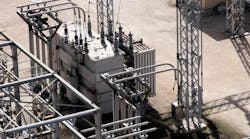Verizon, which offers IoT platforms as a service, released its second annual State of the Market: Internet of Things report last week. Among the highlights: A 58% year-over-year growth in IoT network connections for the energy and utilities.
Just to be clear, Verizon characterizes an IoT network connection to be the sensor, which may include embedded cellular M2M (machine-to-machine) or communications via a personal area or local area network to a cellular enabled gateway. In other words, NOT exclusively smart phone and tablet connections.
Jay Olearain, director of business development for energy and utilities at Verizon, declined to say what the actual number of connections that 58% increase translates into. But he noted that the majority of new utility business continues to be in smart metering applications.
“So whether its electrical, or water, or gas connections, it’s everything in the utility space involving billable, usable energy to the consumer,” said Olearain.
According to the Institute for Electric Innovation’s 2014 report “Utility-Scale Smart Meter Deployments,” 50 million smart meters have been installed. The target is 70 million; with some pundits estimating an additional 8 million installations since 2014.
Some of the new business is smart meter projects previously funded by the American Recovery Act of 2009, which are just now being implemented. Also, some utilities that did not benefit from the Act can now afford smart meter technology because the cost of sensors and LTE processors has come down.
Utilities are also trying to find applications to justify their investment in smart meters, as most of these stimulus money projects required some type of "in kind" investment.
Olearain said that the deployed sensors can be used to capture additional data, and that some utilities are actively evaluating everything from foliage management to voltage monitoring in order to improve outage management, resolve problems more quickly, and improve customer satisfaction levels.
As for the future, Olearain is bullish on the outlook for IoT network connections in the energy and utility sector. He sees the growth rate continuing at a minimum of the 2014/15 58% year-over-year growth and possibly higher
“When you look at, say, the water utilities, they are not nearly as advanced as their electrical counterparts, so we expect to see continued growth there,” explained Olearain.
The other dynamic he pointed to was decreasing chipset and module costs for 4G LTE technology, which makes it competitive with alternatives.
Whether Verizon’s positive outlook proves accurate depends a lot on utilities figuring out how to do more with data. And that may be a bit more challenging, given that the report also states that only 8% of businesses are using more than 25% of the IoT data that they collect.
Download the full Verizon report, State of the Market: Internet of Things 2016, which covers a number of use cases across a host of industries, and also includes new research from Oxford Economics in addition to Verizon data on IoT usage. (Note: Requires registration.)



